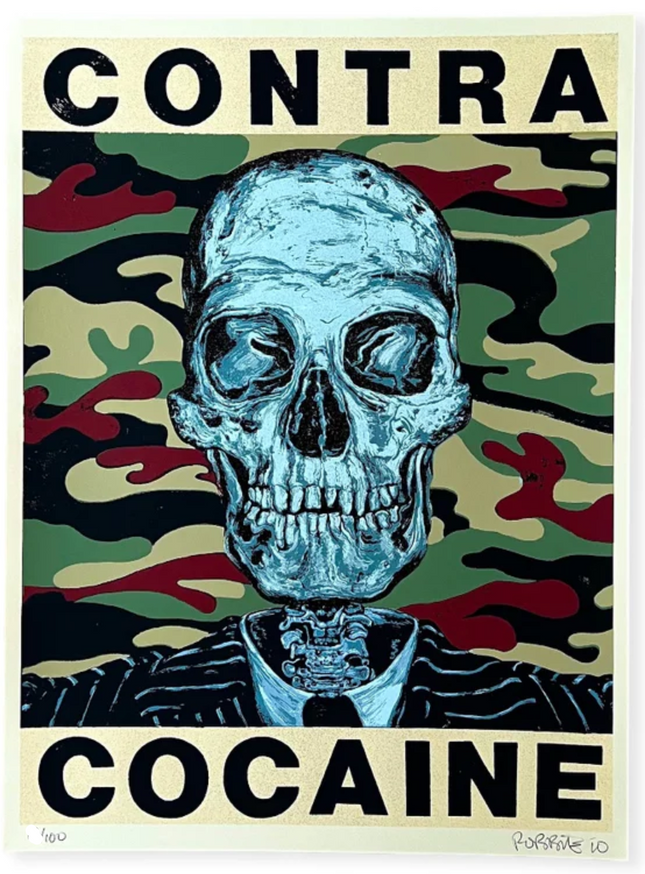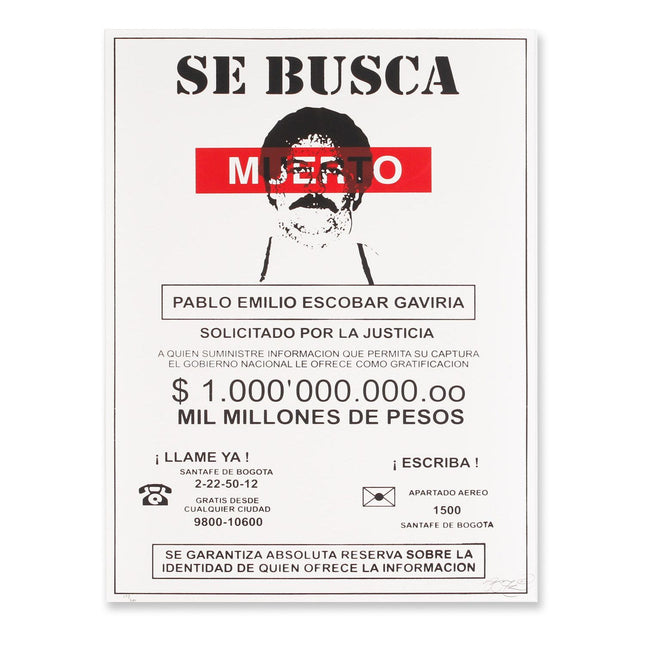
Cocaine as a Subject in Street Pop Art & Graffiti Artwork
Cocaine has been a recurring theme in street pop art & graffiti artwork, often representing themes of power, corruption, excess, and rebellion. The drug trade, its impact on society, and its glorification in pop culture have inspired some of the most controversial and thought-provoking pieces in modern urban art. Artists use cocaine imagery to explore consumerism, crime, and the mythos surrounding figures associated with the drug trade. Through graffiti murals, silkscreen prints, and subversive pop art, cocaine has become an unfiltered reflection of societal obsessions with power and decadence.
Cocaine in Pop Art and Counter-Culture
In pop art, cocaine is frequently depicted as a symbol of the high life, wealth, and destructive ambition. Artists have used imagery of rolled-up banknotes, razor blades, and powder trails to capture the excesses of celebrity culture and the dark underbelly of fame. Many street pop artists use the iconography of cocaine to critique capitalism, illustrating how drug culture is often marketed and glorified in the entertainment industry. Logos of luxury brands, altered advertisements, and neon-style paintings featuring cocaine-related paraphernalia have been used to satirize how drugs and materialism intersect.
Street Art’s Perspective on the Cocaine Trade
Many graffiti artists and street pop artists have tackled the impact of the cocaine trade on global politics, crime, and social decay. Murals depicting drug kingpins, law enforcement crackdowns, and community struggles with addiction have been used to shed light on the real consequences of cocaine trafficking. Some works focus on the violence associated with the narcotics industry, often featuring stencil-style portraits of infamous figures involved in the trade. Others use sarcasm and irony, presenting drug lords as pop culture celebrities, mimicking their idolization in mainstream media.
Collectible Cocaine-Themed Street Pop Art & Graffiti Artwork
Cocaine-themed artworks have become highly collectible, particularly pieces that feature bold political commentary, historical references, or counter-culture symbolism. Many hand-pulled silkscreen prints, graffiti-style posters, and mixed-media installations incorporate cocaine as a metaphor for excess, corruption, and the illusion of success. Artists continue to use stark color contrasts, stencil techniques, and provocative messaging to explore the cultural fascination with drug culture. These artworks challenge viewers to reflect on both the glamour and destruction associated with cocaine, making it a powerful subject in contemporary street pop art & graffiti artwork.


